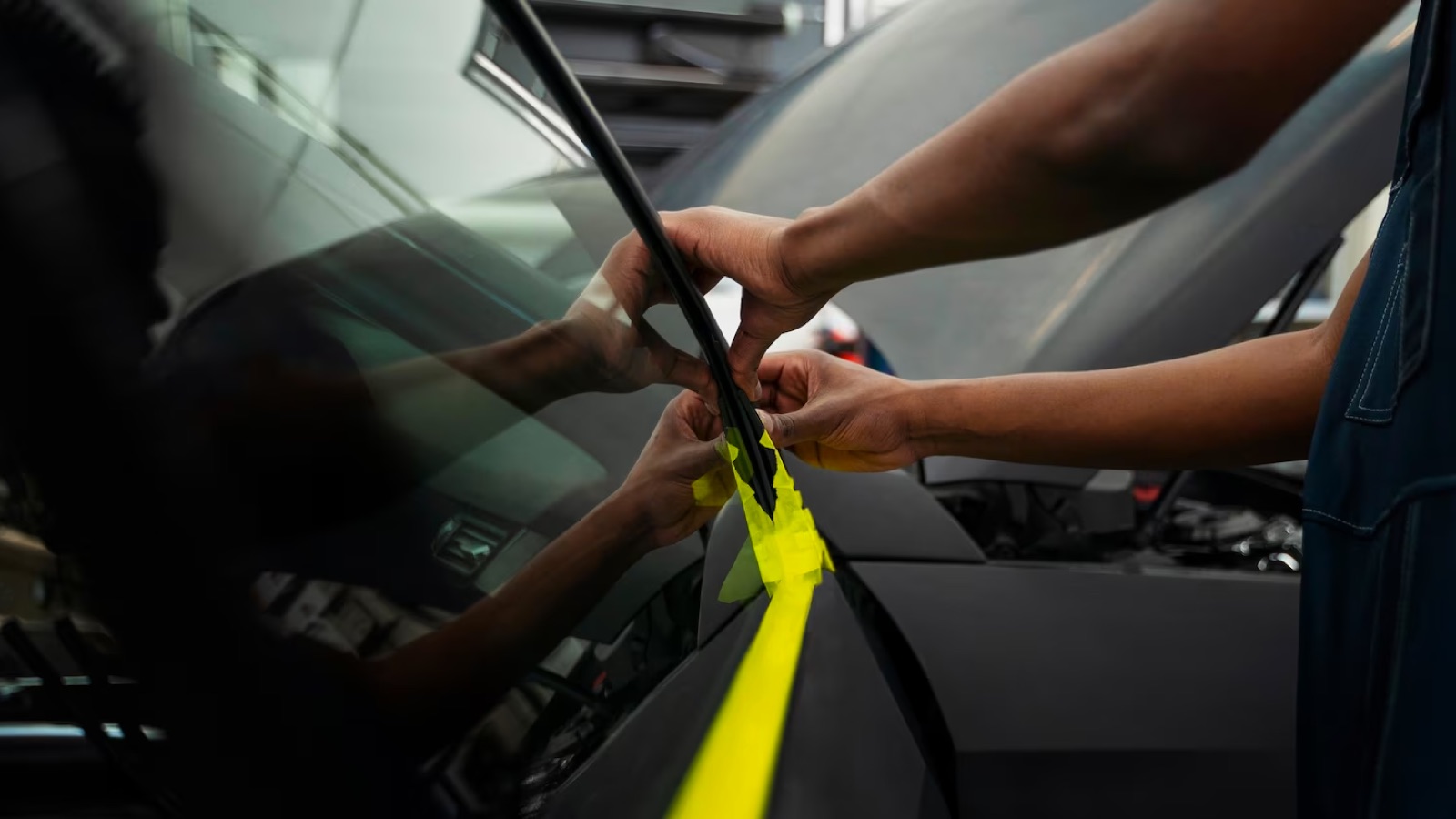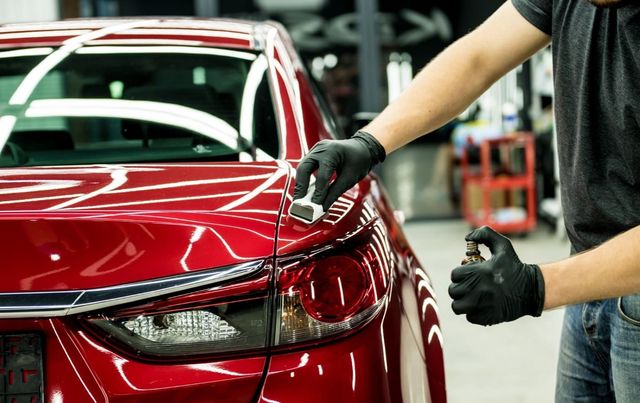The Science Behind Ceramic Coatings: How They Protect Your Vehicle
The Science Behind Ceramic Coatings: How They Protect Your Vehicle
Blog Article
Exactly How Ceramic Coating Boosts the Longevity of Your Automobile's End up
Ceramic coating has actually arised as an essential development in automotive treatment, using a considerable improvement to the durability of a car's finish. By developing a robust, semi-permanent bond with the manufacturing facility paint, ceramic finishes offer a formidable obstacle against ecological risks, consisting of UV rays and chemical pollutants.
What Is Ceramic Coating?
Ceramic coating is a cutting-edge protective option that boosts the longevity and appearance of automobile surface areas. This innovative technology involves the application of a liquid polymer that chemically bonds with the factory paint, producing a sturdy layer of defense. Unlike traditional wax or sealants, which offer only momentary advantages, ceramic finishes supply long-lasting resilience against environmental contaminants and physical wear.
The main element of ceramic coverings is silica, which forms a solid bond with the car's surface. As a result, vehicles treated with ceramic coatings keep their aesthetic allure over time.
Application of ceramic coating requires precise prep work, consisting of extensive cleaning and purification of the car's surface area to make sure optimal attachment. When used, the coating treatments to develop a semi-permanent guard that can last for a number of years when properly kept. This innovative remedy represents a substantial improvement in automotive treatment, providing a premium alternative to traditional methods of surface area defense.
Benefits of Ceramic Coating
Among the most considerable benefits of applying ceramic coating to a lorry is the enhanced security it offers against ecological damages. This advanced protective layer acts as a formidable barrier versus unsafe elements such as UV rays, bird droppings, tree sap, and acid rainfall, which can bring about fading, etching, and corrosion of the car's paintwork.
Along with safeguarding against environmental dangers, ceramic coating considerably minimizes the regularity of cleaning and detailing. Its hydrophobic buildings fend off water and dirt, enabling impurities to glide off even more conveniently, causing a cleaner surface for a longer duration. This not just conserves time and initiative yet additionally minimizes the wear and tear associated with regular washing.
Additionally, ceramic coating offers a high-gloss finish that enhances the car's appearance, giving it a showroom beam that lasts. This visual advantage is enhanced by a boost in resale value, as a well-kept exterior frequently equates to a more appealing deal on the marketplace.
Eventually, the benefits of ceramic coating expand past simple looks, using functional services for long-term lorry treatment and preservation.
How Ceramic Coating Works
At its core, ceramic coating functions through a chemical bonding procedure that integrates with the vehicle's manufacturing facility paint. This cutting-edge coating includes nanoparticles, commonly made from silicon dioxide (SiO2), which produce a robust and durable layer on the surface area of the paint. When used, the ceramic coating passes through the microscopic pores of the vehicle's surface area, developing a semi-permanent bond that enhances the paint's safety qualities.
The outcome is an ultra-thin, hydrophobic layer that wards off water and contaminants, making it extra tough for dust, gunk, and various other environmental pollutants to follow the surface area. This function not just simplifies upkeep, as cleaning ends up being extra effective, yet also lowers the risk of scrapes and swirl marks that can mar the coating in time.
In addition, ceramic finishings give UV security, securing the paint from hazardous sunlight direct exposure that can result in oxidation and fading. The chemical make-up of the coating guarantees that it continues to be undamaged under various climate condition, adding to the long life of the vehicle's surface. Generally, the application of ceramic coating is an aggressive step that strengthens and maintains the visual appeal of a car for several years ahead.
Comparison With Traditional Wax
When thinking about automobile defense alternatives, comparing ceramic finishings to standard wax exposes substantial distinctions in performance and longevity. Conventional wax, while offering a momentary luster and a layer of security, commonly lasts just a few weeks to a couple of months, relying on ecological conditions and maintenance practices. In contrast, ceramic finishings use a much a lot more long lasting option, lasting a number of years with proper treatment.

In addition, ceramic coatings offer a self-healing residential property that can fix small scrapes and swirl marks when revealed to warmth. This is an attribute typical wax can not offer. Overall, while wax might be more economical and simpler to apply, the long-lasting benefits of ceramic coverings make them a remarkable option for those seeking to preserve the integrity and visual allure of their automobile's surface.
Maintenance Tips for Ceramic Coating
Correct upkeep is vital to guarantee the longevity and effectiveness of a ceramic coating. To start with, routine cleaning is essential; make use of a pH-balanced cars and truck shampoo and microfiber towels to minimize damaging. Prevent automated automobile washes that usage extreme brushes, as they can deteriorate the coating with time.

Using a top-up spray or upkeep item created particularly for ceramic finishes can aid invigorate the hydrophobic buildings and boost sparkle (ceramic coatings). Prevent utilizing conventional waxes or sealants, as they might disrupt the coating's performance
Lastly, take into consideration routine specialist assessments and maintenance by a detailer experienced with ceramic coverings. They can evaluate the condition of the coating and offer specialized treatment, additional prolonging its life and ensuring your lorry stays visually appealing for several years to find.
Conclusion
In final thought, ceramic coating offers as an effective option for boosting the longevity of an automobile's coating. Overall, the adoption of ceramic finishes stands for a significant development in vehicle treatment, ensuring ideal paint conservation for years.
Ceramic coating has actually arised as a pivotal development in automobile treatment, using a important link significant improvement to the longevity of a car's finish. When applied, the ceramic coating penetrates the microscopic pores visit the site of the car's surface, developing a semi-permanent bond that improves the paint's protective high qualities.
When thinking about automobile defense alternatives, contrasting ceramic layers to traditional wax reveals significant differences in performance and long life.Ceramic coatings create a solid chemical bond with the automobile's paint, producing a hydrophobic surface that pushes back water, dust, and pollutants.In conclusion, ceramic coating offers as a reliable option for improving the longevity of a vehicle's finish.
Report this page